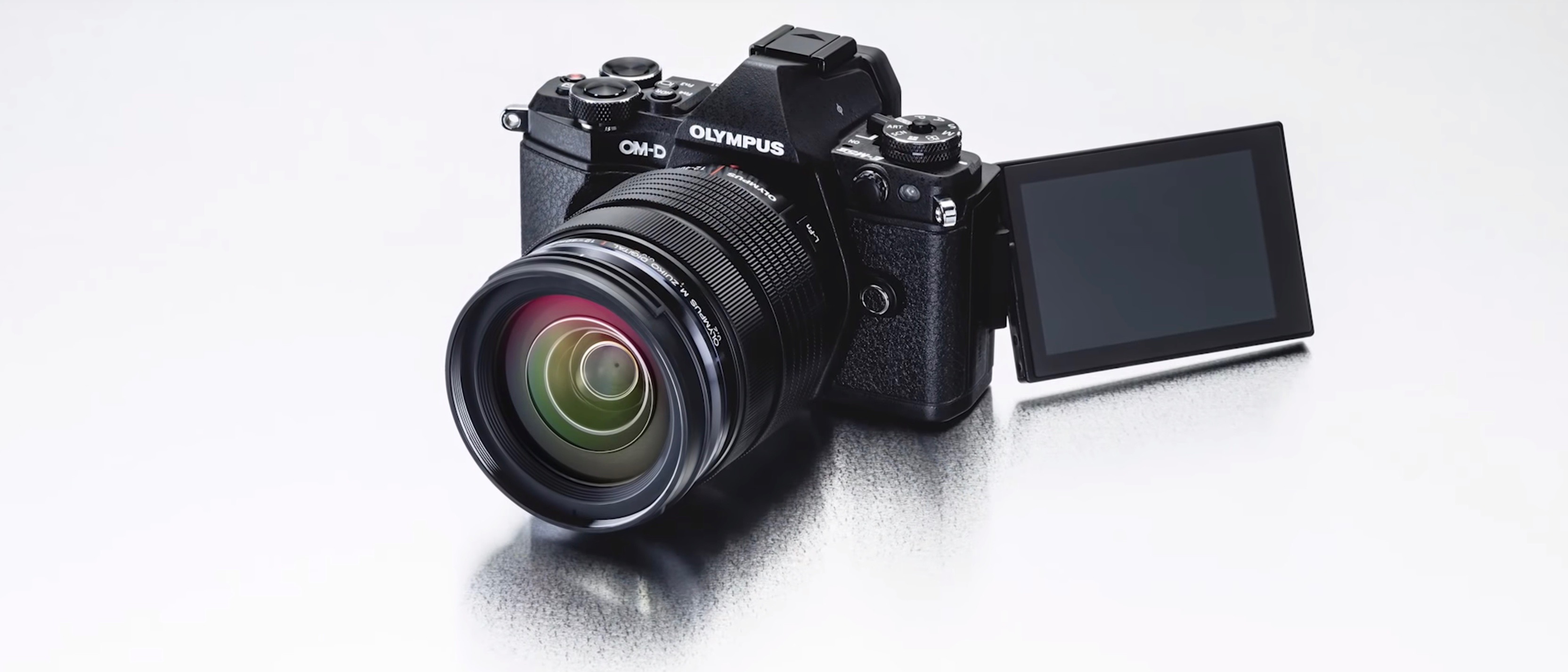Digital Camera World Verdict
The E-M5 line continues to offer the best combination of compactness and capabilities in the OM-D mirrorless system, and the Mark II model packs even more into its small bodyshell.
Pros
- +
Supremely compact and lightweight
- +
High Res Shot mode gives 64MP RAWs
- +
Extensive range of M43 format lenses
Cons
- -
Micro Four Thirds losing shine to bigger sensors
- -
Clunky user interface
Why you can trust Digital Camera World
When the OM-D E-M5 Mark II was launched, it had been a very long time since there was really anybody other than Canon and Nikon in the frame when considering a ‘small format’ professional camera. But the times they were a-changin’, and the rise and rise of the mirrorless designs is bringing some old names back into the frame, most notably Olympus.
At the height of the 35mm OM system’s popularity, Olympus was the brand of choice for both pros and celebrity shooters alike. It was standard issue at National Geographic magazine, but plenty of others were also seduced by the whole OM ethos of compact, high performance cameras.
Now, around three decades later, Olympus is attempting to repeat this success with its digital-era OM-D system and it’s already enjoying a fair degree of success. The key ingredients are, once again, compact and highly-featured camera bodies, a superb system of lenses and, importantly, some appetite-inducing marketing. But most critical is the reprising of the styling which made cameras like the OM-4 such a hit. In a more general sense, this is also the story of mirrorless-versus-reflex. But while OM-D is undoubtedly a mirrorless success story; beyond the size benefits derived from eliminating the reflex mirror, the rise up the sales charts is really being propelled by the more identifiable ‘Olympusness’ of cameras like the E-M1… including the OM-era styling.
As it happens, models like the E-M1 represent serious implications for the D-SLR market, but the OM-D system collectively has helped legitimise the category, converting dyed-in-the-wool traditionalists who would have once never contemplated using anything other than a reflex. This trend is very likely to continue with the E-M5 Mark II which is, in reality, so different from its predecessor, it probably warranted a completely new model number, but then Olympus is no doubt keen for owners of the original to upgrade. Certainly, there has been a lot of water under the mirrorless camera bridge since the first E-M5 was launched back in early 2012 and, significantly, in that time OM-D has become the emphasis of Olympus’s activities in this category, surpassing the compact-style Digital Pen cameras. History, unquestionably, looks set to repeat.
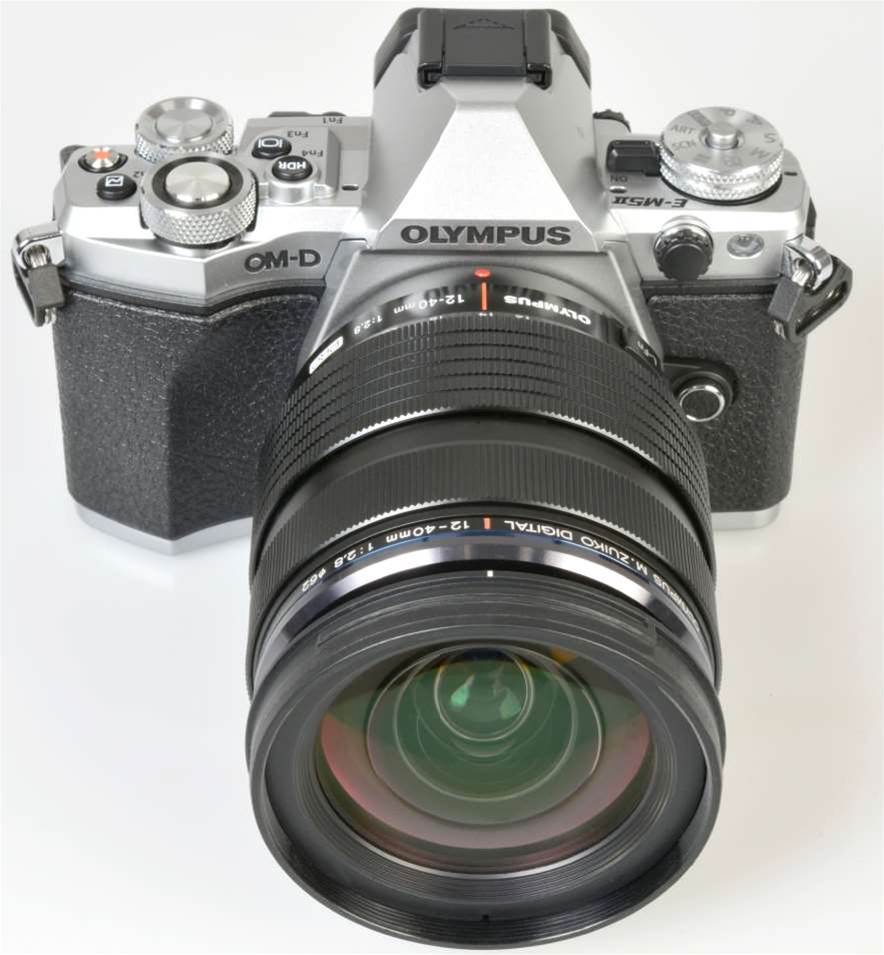
Channelling OM
While it’s even more traditional-looking on the outside – and, consequently, even more OM-like – on the inside, the E-M5 II leverages all the current digital imaging technologies to deliver new capabilities and increased performance in quite a number of areas.
For the first time, Olympus is actively pursuing the video-maker and although the E-M5 II isn’t in the same league as Panasonic’s GH4 in this regard, it’s the next best thing in the Micro Four Thirds format (i.e. without going to a dedicated video camera). But the still photographer has plenty to be pleased about too, not the least being a multi-shot capture function that yields a 40 megapixels JPEG image or a 64 MP RAW file (more about this shortly).
Styling-wise, the E-M5 II has a more ‘pointy’ housing for its electronic viewfinder which is very reminiscent of the pentaprism housing on the OM-1 and OM-2. The lever-type on/off switch is borrowed straight from the OM-1 (it’s also reprised on the E-M1) and is located in exactly the same position on the top deck. The main mode dial now has a locking button – which you can choose to use or not – while the front and rear input wheels – now looking more dial-like than ever – have been downsized and relocated almost in tandem rather than side-by-side. This has freed up space for two more customisable buttons, namely ‘Fn3’ and ‘Fn4’ which default, respectively, to manual EVF/monitor switching and engaging HDR capture. On the rear panel is another analog-era lever – again borrowed from the E-M1 – which quickly switches the operations of the input wheels between exposure control (i.e. program shift/apertures/shutter speeds and exposure compensation) and ISO/white balance setting. You can also switch around which wheel does what. It’s a neat little arrangement which works really well in practice, essentially making four different functions accessible via the flick of a switch.
Perhaps more interestingly on the rear, the monitor screen now has full tilt-and-swing adjustability so it can also be folded away with the faceplate inwards for protection. The panel itself is now a TFT LCD screen – but still 7.62 cm in size – with an increased resolution of 1.037 million dots and capacitance-type touch control. The EVF is inherited from the E-M1 which means, compared to the E-M5, it steps up to a resolution of 2.36 million dots and a magnification of 1.48x. This also means it’s exceptionally good, exhibiting excellent clarity, contrast and colour with no traces of lag even with rapid panning (Olympus says the latency is now down to 10 milliseconds). Proximity sensors on the eyepiece enable automatic switching between EVF and monitor.
On the front panel, the E-M5 II sports a reshaped handgrip and, on the other side of the lens mount, a PC flash terminal which is a new addition and just one example of the new version’s movement further up-market. As before, there isn’t a built-in flash, but the camera is supplied with a very nifty little accessory unit which, despite its smallness, has a bounce-and-swivel head. It’s powered from the camera body via an extra contact in the hotshoe which, incidentally, no longer has an accessory port at its rear… simply because the E-M5 II now has all these ‘extras’ built-in, including WiFi and a stereo audio input.
The bodyshell comprises magnesium alloy covers and is fully sealed against the intrusion of dust or moisture… which Olympus has been able to maintain even with the side-mounted monitor screen. Additionally, there’s now insulation which allows for operation in temperatures down to -10 degrees Celsius.
The changes to the control layout as well as subtle revisions to the styling make for a much more cohesive look overall and the new E-M5 easily matches Fujifilm’s X-T1 for sheer visual appeal.
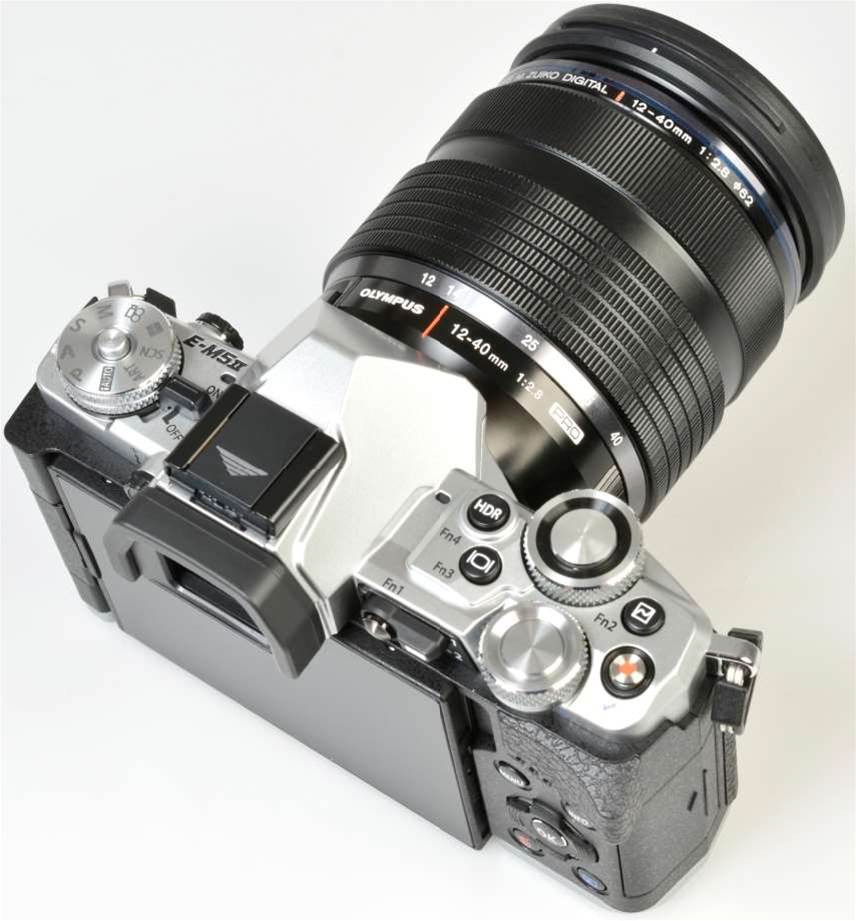
Five stops IS correction… and 40 MP!
The inside story is also a good one. The sensor is a redesigned version of the 17.2 megapixels ‘Live MOS’ imager used in the previous model, but the E-M5 II matches it with the E-M1’s more capable ‘TruPic VII’ processor which drives a number of performance enhancements for both still photography and video recording. For example, the maximum continuous shooting speed is now 10 fps with the AF/AE locked to the first frame and 5.0 fps with AF/AE adjustment between frames. The sensitivity range is equivalent to ISO 200 to 25,600 with a one stop ‘pull’ to ISO 100.
Like the E-M1, the E-M5 II has five-axis image stabilisation via sensor shifting, but it’s actually a new system completely re-engineered for greater precision of operation… with hand-held video shooting applications particularly in mind. The amount of correction for camera shake is increased to five stops and it’s possible to hand-hold at much slower shutter speeds, down to around ¼ second (which usually defeats a conventional IS system). Tellingly, Olympus now includes image stabilisation as one of the key components for obtaining optimum picture quality, especially when shooting close-ups or using a telephoto lens. There’s a choice of modes for panning or the system can be left to detect the camera movement and set the appropriate mode automatically.
Just how precise the new IS system is can be gauged from a new spin-off feature called ‘High Res Shot’ which works in the same way as the multi-shot capture found on some digital medium format systems. A series of eight images are captured in sequence, taking roughly a second with the sensor shifted in one-pixel increments for the first four – so that all colours are captured at each position, cancelling out the effects of the Bayer pattern filter – and half-pixel increments for the next four. The eight exposures are then combined in-camera which takes a couple of seconds to complete. The end result is either a 40 megapixels (7296x5472 pixels) JPEG or a 64 megapixels (9216x6912 pixels) RAW file (which is about 100 MB in size).
Of course, a prerequisite is that both the camera and the subject be totally static, but for subjects such as landscapes, architecture or still life set-ups, this shouldn’t be too much of an issue. As the IS system is disabled to enable the High Res shift, the camera just has to be mounted on a tripod; hand-held shooting isn’t an option.
In addition to the massive increase in resolution, the combined multiple exposures significantly reduce noise (the maximum ISO available for this mode is 1600) and also moiré patterns. It’s not a new idea, but it’s the first time it’s been done on a small format camera and, as has happened with a number of pioneering ideas from Olympus (active dust reduction, remember), it’s likely that everybody will follow suit. Obviously too, it’s one way, albeit slightly compromised, for MFT and ‘APS-C’ format cameras to match the big pixel counts of the full-35mm sensors in the likes of the Nikon D810 and Canon EOS 5DS duo.
‘High Res Shot’ uses a sensor-based shutter to make the exposures and this is another new feature on the E-M5 II, enabling totally silent operation when shooting normally and also giving a faster top speed of 1/16,000 second and a continuous shooting rate of 11 fps. A conventional focal-plane shutter is retained and has a speed range of 60-1/8000 second with a ‘B’ setting which allows for a maximum duration of 30 minutes.
Light and shade
Exposure control is based on the 324-point ‘Digital ESP’ multi-zone metering currently in service across the OM-D range. There are the options of centre-weighted average or spot measurements, the latter maintaining the Olympus tradition of being adjustable for either the highlights or the shadows.
The main ‘PAS’ auto exposure control modes are backed by an AE lock, up to +/-5.0 EV of compensation and auto bracketing which can be applied over sequences of two, three, five or seven frames with adjustments of +/-0.3, 0.7 or 1.0 EV. Incidentally, all the exposure-related adjustments can be preset to be made in one of these three increments.
There’s a choice of 25 subject/scene modes with automatic scene selection in the camera’s ‘iAUTO’ full-auto mode. While ‘iAUTO’ can be entirely point-and-shoot, there’s a series of basic manual overrides called ‘Live Guides’ These are accessed via a touch tab on the monitor display and provide some control over colour saturation, colour balance, brightness, background blur and the blurring/freezing of moving subjects. The adjustments are applied via touch-operated slider-type controls.
As on the previous model, there’s a selection of six ‘Picture Mode’ presets called i-Enhance, Vivid, Natural, Muted, Portrait and Monotone. The i-Enhance preset boosts the saturation of whatever colour predominates in a scene and also adjusts the dynamic range. Each colour ‘Picture Mode’ has adjustable parameters for sharpness, contrast, colour saturation and tonal gradation. This last parameter has sub-settings called Normal, Auto, High Key and Low Key. The Monotone ‘Picture Mode’ replaces the saturation adjustment with a set of contrast control filters (yellow, orange, red and green) and a choice of toning effects (sepia, blue, purple or green). There is a provision for creating one user-defined colour ‘Picture Mode’.
Additionally, there’s a simplified Curves-style adjustment for individually controlling the brightness of the highlights and/or the shadows. With the ‘Highlight & Shadow Control’ activated, the front dial adjusts the highlights while the rear dial adjusts the shadows. Similarly, there’s a ‘Colour Creator’ control which also works like a Photoshop function – the Saturation/Hue adjustment – with the front dial adjusting the hue and the rear dial the saturation.
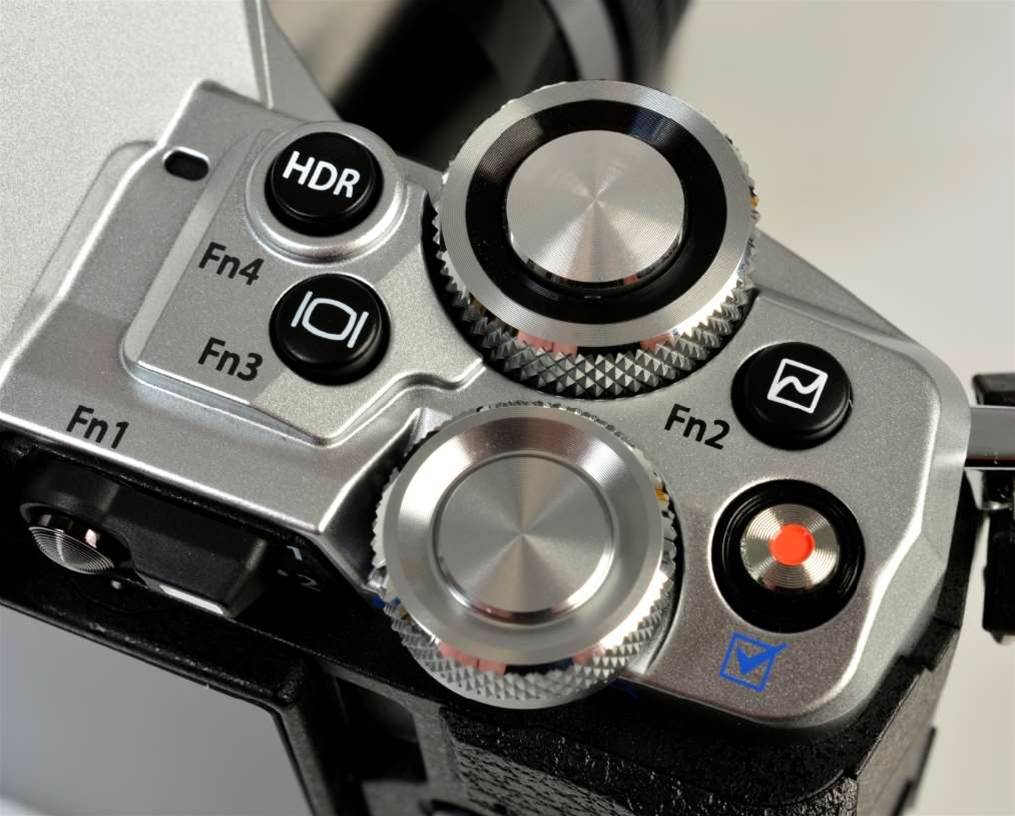
Taking effect
After starting out tentatively with in-camera filter effects, Olympus now embraces them as wholeheartedly as anybody and the E-M5 II has a total of 14 ‘Art Filter’ special effects, most of which are adjustable. Additionally, these can be combined with a number of ‘Art Effects’ and there’s a bracketing function which allows for every effect – and the ‘Picture Modes’ – to be included in the sequence so there’s the possibility of having a total of 21 variations of an image.
Additional image processing functions are borrowed from the E-M1, namely an intervalometer for creating time-lapse sequences and a multi-shot HDR function. The intervalometer allows for up to 999 frames to be recorded at intervals of up to 24 hours. The HDR function has two auto modes which capture four frames at two different amounts of exposure variation and then combines them into the one image with either “high contrast” or “super-high” contrast. Alternatively, there’s a choice of presets – three, five or seven frames at +/-2.0 EV; and either three or five frames at +/-3.0 EV. Multiple exposures – well, actually only double exposures – can be made with the option of an ‘Auto Gain’ exposure adjustment.
The white balance control options are virtually the same as those provided on the E-M1. The auto correction has a ‘Keep Warm Colour’ option for use when shooting under tungsten lighting, but this needs to be preset in the custom menu. There are seven presets and provisions for storing up to four custom measurements. All have fine-tuning, set using slider-type controls for the amber-to-blue and green-to-magenta colour ranges. Manual colour temperatures can be selected over a range of 2000 to 14,000 degrees Kelvin. Auto white balance bracketing is performed over a sequence of three frames. As with the other OM-D models, all the auto bracketing functions are collected in one menu and the other options are for exposure, flash and sensitivity as well as the already-mentioned exposure and ‘Art Filters’.
Fast focus
Unlike the E-M1, the E-M5 II employs a conventional contrast-detection autofocusing system, but it has the same number of measuring points – 81, arranged in a 9x9 pattern – which provide pretty extensive coverage across the frame. Additionally, Olympus’s ‘FAST’ (Frequency Accelerated Sensor Technology) processing means speed isn’t really an issue even without the extra assistance of a hybrid system.
Point selection can be left to the camera or performed manually with selectivity varied via a choice of two target sizes or a group setting which uses a cluster of nine (3x3) points. Face detection AF can also be fine-tuned to focus on either the left or right eye or whichever one is nearest the camera. Over 800 points are available when using the ‘Zoom AF’ mode which magnifies the image by 3x (new on this model), 5x, 7x, 10x or 14x.
Switching between single-shot and continuous AF operation is performed manually and Olympus continues to a full-time override for the former, and an auto tracking option with the latter. The M.Zuiko Digital PRO lenses – such as the 12-40mm f2.8 which is one of the kit options for the E-M5 II – have a clever push-pull focusing collar which allows for quick and convenient switching between AF and MF control. Manual focusing is assisted by a magnified image (with the same choice of settings) and a focus peaking display which can be set to red, yellow, black or white; and low, normal or high intensity. As an aside, the PRO lenses are also weather-proofed and Olympus has just added a 40-150mm f2.8 to the M.Zuiko Digital line-up (equivalent to 80-300mm). Five weather-proofed lenses are available now with another two to come during 2015, including an 8mm f1.8 fish-eye (which will also be a PRO lens).
In control and on display
The increased scope for control customisation makes it possible to configure the E-M5 II very precisely to your way of working or the demands of a particular application. This basically takes in-the-field operability away from the menus and onto the external controls which can be set to cover everything you’re likely to need. And this is even without using the handy ‘Super Control Panel’ display in the monitor screen which provides direct access to a wide range of capture settings and can be navigated via touch control or by using either the four-way key pad on the rear panel or the rear input wheel. Adjustments are made via the front wheel. Alternatively, there’s the option of using a ‘Live Control’ screen which provides the live view image with the function tiles arranged along the left-hand edge of frame and the actual settings along the bottom edge. Usefully, both the ‘Super Control Panel’ and the ‘Live Control’ display can be selected for display in the viewfinder as well as the monitor screen.
Olympus assumes nothing in terms of how you might like to configure your displays so, if you want these control options, you’re going to have to switch them on… and, what’s more, this has to be done for each of the camera’s main operational configurations – i.e. iAUTO, PASM, Art Filters and Scene Modes. This means repeating the procedure four times if you want the control screens to be available all the time. Olympus employs this ‘opt in’ approach for most aspects of the E-M5 II’s operation – all the displays, for example – which means its Custom Menu is one of the most extensive you’ll encounter outside of the OM-D family and the full set-up takes a bit of time. That said, absolutely every possible option is provided and you really can pick and choose which elements you want and those you don’t.
The review/replay screens can be configured to include a thumbnail image with a full set of histograms (i.e. brightness and RGB channels), a larger brightness histogram superimposed over the image, highlight and shadow warnings and a ‘Light Box’ display for the side-by-side comparison of two images (with zooming which is very handy). The thumbnail pages comprise four, nine, 25 or 100 images plus a calendar display, again all of which has to be switched on in the Custom Menu. Touch controls are available for browsing, zooming and scrolling through the thumbnails. The in-camera editing functions remain the same as before and comprise Shadow Adjust, Red-Eye Fix, Aspect, B&W, Sepia, Saturation, Trimming Resize, e-Portrait and RAW-to-JPEG conversion. The special effects aren’t available post-capture.
Setting up the monitor and EVF displays also requires a trip to the Custom Menu with options being a real-time histogram, dual-axis level indicators, highlight and shadow warnings and a superimposed grid (choice of five). Importantly, these can now all be combined in the one all-singing, all-dancing display. The highlight and shadow warnings have adjustable thresholds and the real-time histogram includes an internal section – displayed in green – which shows the brightness values within the selected focusing point or cluster of points.
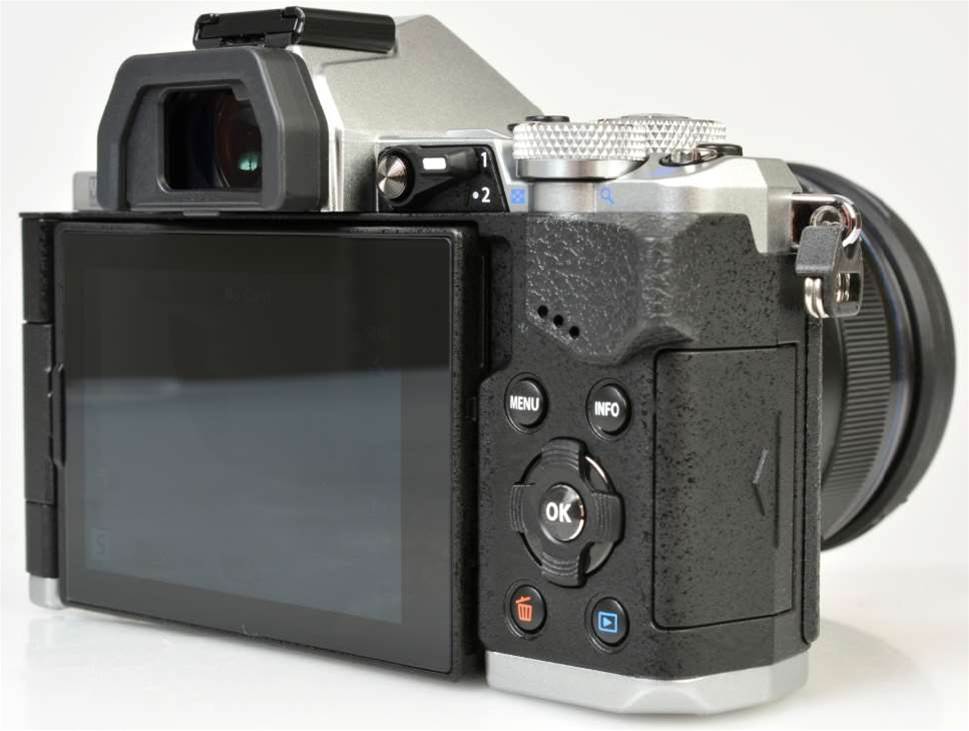
Making movies
Olympus freely admits that video hasn’t been a priority on its OM-D cameras to date, but perhaps watching the success MFT rival Panasonic is having with the Lumix GH4 (and the GH3 before it) has convinced it to also go after these users. Consequently, in one hit, Olympus has gone from just dabbling to being really serious, and the E-M5 Mark II gets pretty well everything needed to compete with the big guns in this sector.
Obviously the five-axis image stabiliser underpins an impressive suite of video capabilities which Olympus is collectively calling “OM-D Movie”. The ability to shoot smoothly when the camera is hand-held is a key selling point – ‘run and gun’ in video parlance – and the demos here are impressive with the footage looking stable enough to have been shot with a dolly or jib. There’s the option of using just the sensor-shift or combining it with electronic stabilisation (made possible by a small crop of the sensor image prior to downsampling). And, of course, it works with any lens which is important in the video world where camera bodies – especially with the MFT mount – are being used with all sorts of glass, ancient and modern… given manual diaphragm control and focusing is often more desirable. That said, the refinements to the E-M5 II’s AF system also have benefits here, particularly in terms of response speeds and the smoothness of the continuous AF.
Full HD shooting is available at all frame rates (in all regions) with progressive scan – 60 fps, 50 fps, 30 fps, 25 fps and, crucially, 24 fps – with the option of All-Intra intraframe or IPB interframe compressions regimes (although All-I is only available with the three slower speeds when shooting at FHD). With All-I compression, the bit rate is an impressive 77 Mbps, but when using IPB it’s still an acceptable 52 Mbps. Importantly, an uncompressed and ‘clean’ video feed (8-bit, 4:2:2 colour and 24 fps, 25 fps or 30 fps) is available at the camera’s HDMI terminal for recording to external devices. However, it’s not possible to simultaneously record compressed video to the memory card which is a bit of a disappointment. Unlike the GH4, the E-M5 II doesn’t shoot at 4K, but for many users – even pros – this isn’t really an issue… at least not yet.
The E-M5 II has built-in stereo microphones, but there’s also a stereo audio input and provisions for manually controlling the recording levels. The optional HLD-8G handgrip has a stereo audio output for connecting headphones for monitoring purposes. This is a compact device so it doesn’t compromise the camera’s overall smallness, but you can subsequently then fit the HLD-6P battery holder – which houses an additional li-ion pack and also serves as a vertical grip – if endurance is a more critical requirement. There’s also a volume limiter and a switchable wind noise filter.
The monitor screen’s full range of adjustments also have benefits when shooting video as does the availability of touch controls for functions including AF point selection and focusing, exposure, audio recording levels, headphone levels and power zooming (when a supporting lens is fitted). Obviously all these touch-control adjustments are made silently. In this regard, the sensor shutter also gets a big tick. The exposure mode is first set via the Movie Menu, and then the aperture, shutter speed or ISO can be selected via a tabbed ‘pull-out’ menu and adjusted during recording via up/down sliders (or the rear input wheel). The trick here is to use a light touch, otherwise a slight vibration can be visible in the footage (even with the IS operating).
Usefully, the focus peaking display is now available when shooting video (with the same choice of four colours and three intensities as for stills) and there’s a real-time histogram which also remains on-screen when shooting (whereas the highlight and shadow warnings don’t). The grid guides are also available. You can apply most of the ‘Art Filter’ effects. Additionally, there’s a choice of five ‘Movie Effect’ settings called Art Fade, Old Film, Multi Echo, One Shot Echo, Multi Teleconverter. The E-M5 II can also add time-coding to footage and provides a seamless transition to a new file when the 4.0 GB limit is reached.
Speed and performance
With our reference memory card – Lexar’s Professional 600x 64 GB SDXC UHS-I speed device – loaded, the E-M5 Mark II captured a burst of 19 JPEG/large/superfine frames in 1.961 seconds which represents a continuous shooting speed of 9.7fps. This is only a whisker below the quoted 10 fps (using the focal plane shutter) and the test file sizes were around 9.8 MB on average which is quite a lot larger than the 8.4 MB on which Olympus bases its speed measurement. Although it’s not really very big, the buffer empties very rapidly indeed, but the camera will go on shooting when it’s full, just at a slower frame rate.
Once again, Olympus demonstrates that sensor size and pixel counts aren’t necessarily everything and it continues to squeeze more performance out of its MFT ‘Live MOS’ imager. In the case of the E-M5 II it helps that the optical low pass filter (OLPF) has been removed to help optimise resolution, as is the case with the E-M1. The superfine quality JPEGs are just packed with crisply-defined detailing and super-smooth tonal gradations. Perhaps most surprising is the dynamic range which is wider than might be expected for a ‘small’ sensor. The colour reproduction is excellent across the spectrum and from the subtlest of shades through to fully saturated tones. The Vivid ‘Picture Control’ delivers really punchy images that are reminiscent of the best colour transparency films in terms of the saturation, sharpness and contrast. Of course, the PRO series 12-40mm f2.8 zoom lens does its bit here too, delivering an exception uniformity of sharpness from centre-to-corner across both its focal range and aperture range. Even at f2.8, the corner sharpness is still extremely good and the light fall-off (i.e. vignetting) minimal.
Noise levels are very low up to ISO 3200 and both the ISO 6400 and 12,800 are still quite usable, but exhibit some graininess in areas of continuous tone while the reduction processing starts to reduce the definition. As we noted with the E-M1, the imaging performance doesn’t give anything away to the rival CSCs with a larger ‘APS-C’ sensor, even the best of them such as Fujifilm’s X-T1 or Samsung’s NX-1.
And the E-M5 II even has a tilt at cameras with full-35mm sensors via its multi-shot ‘High Res Shot’ capture mode. It’s a little restricted in its usage because the subject has to be absolutely static and the camera (very securely) mounted on a tripod, but in the right situations, the 40 megapixels JPEG look stunning and very noticeably exhibit much higher levels of fine detailing compared to shooting at 16 MP. As noted earlier, the sub-pixel shifts also have the effect of eliminating moiré patterns even though the Olympus’s sensor doesn’t have an OPLF. And because HRS is sampling all colours at all pixel positions, the chroma (or colour) resolution is as high as the luminance resolution so colour accuracy is maintained down to pixel- level detailing.
Verdict
Whether Olympus will actually manage to revisit the dizzy heights it enjoyed during the OM System’s glory days remains to be seen, but it’s done all the right things so far and you get the sense that there’s much more to come… much more. The flagship E-M1 has obvious pro camera credentials and by virtue of incorporating quite a lot from this camera, the Mark II E-M5 is much more qualified here than its predecessor. Yet it’s both more compact and less expensive which makes it a very attractive proposition indeed.
It’s also the prettiest OM-D camera to date, but its beauty is more than skin deep. Olympus has given it some serious brains too – the uprated image stabiliser, the 40 MP capture mode, the 81-point AF, the significantly better EVF and the pro-level video capabilities. Then there’s the improved handling and operational efficiency (much improved in the case of the latter), the tilt/swing monitor, and the more generous accessory flash.
Finally, Olympus has sprinkled it with the fairy dust that made the original OM cameras so desirable and which it has obviously rediscovered for the OM-D era. It’s that indefinable ‘something’ which creates a camera you just can’t resist picking up and using. It all adds up to something rather special and the E-M5 Mark II has it in spades.
Read more:
Olympus OM-D E-M10 III vs E-M5 III vs E-M1 II: which OM-D is right for you?
These are the best mirrorless cameras right now
We pick the best cameras for beginners
